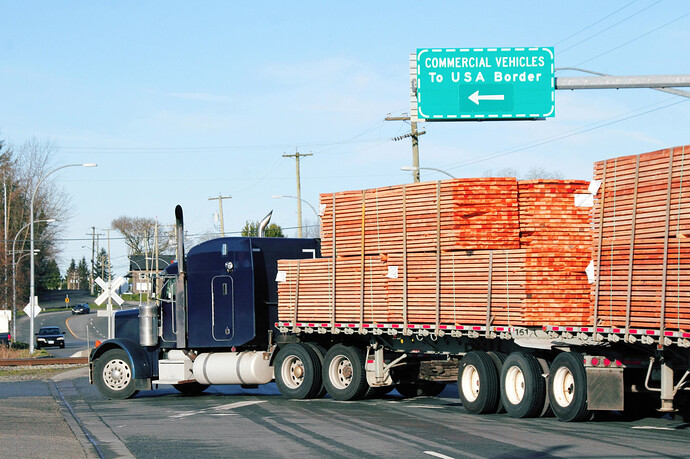The longstanding trade dispute between the U.S. and Canada over softwood lumber has hinged on a critical factor: the substitutability of lumber products between the two nations. A recent study by researchers at North Carolina State University sheds new light on this issue, suggesting that the degree to which U.S. and Canadian lumber can replace each other depends significantly on price differences.
The U.S.-Canada softwood lumber dispute, dating back to the early 1980s, centers on U.S. producers’ claims that Canadian imports are unfairly subsidized, harming the domestic industry. In response, the U.S. has imposed countervailing and antidumping duties on Canadian lumber to protect its market.
Yifei Zhang and Barry K. Goodwin, economists at North Carolina State University, investigated the dynamic relationship between prices of Spruce-Pine-Fir (SPF) lumber from Canada and Southern Yellow Pine (SYP) lumber produced in the U.S. Their research employed threshold models to assess how price differentials affect the substitutability of these two lumber types.
The study found that when the price difference between Canadian and U.S. lumber is within a 3.4% band, the products are more likely to be considered substitutes by consumers and builders. “Within this narrow price range, buyers may switch between SPF and SYP based on minor price fluctuations,” the researchers noted. However, when price disparities exceed this threshold, the likelihood of substitution diminishes, and the two products operate more independently in the market.
This finding has significant implications for the trade dispute. If Canadian lumber is only a substitute for U.S. lumber within a narrow price range, then duties and trade restrictions might have varying effects depending on current market prices. The U.S. industry’s argument—that Canadian imports directly compete with and harm domestic producers—may hold more weight when prices are closely aligned.
The study also highlights the complexities arising from differences in the physical properties and uses of SPF and SYP lumber. SPF is lighter and preferred for wall framing due to its high strength-to-weight ratio and resistance to warping, while the denser SYP is favored for structural applications like beams and joists.
Despite these differences, the overlap in applications becomes more pronounced when prices converge. Builders may opt for the more cost-effective option when price differences are minimal, increasing the substitutability of the products.
The researchers emphasize that understanding these dynamics is crucial for policymakers. Trade restrictions imposed without considering the nuanced relationship between price differentials and product substitutability may lead to unintended consequences, affecting both producers and consumers on both sides of the border.
The softwood lumber dispute remains the longest-running trade conflict between the U.S. and Canada. While temporary agreements have been reached in the past, a lasting resolution has proved elusive. This study adds a new dimension to the discussion, suggesting that any future agreements should account for how price fluctuations impact market behavior and the substitutability of lumber products.
As the U.S. continues to be one of the world’s largest consumers of softwood lumber, and Canada remains a significant supplier, the interplay between these two markets will likely persist as a critical issue in North American trade relations.
